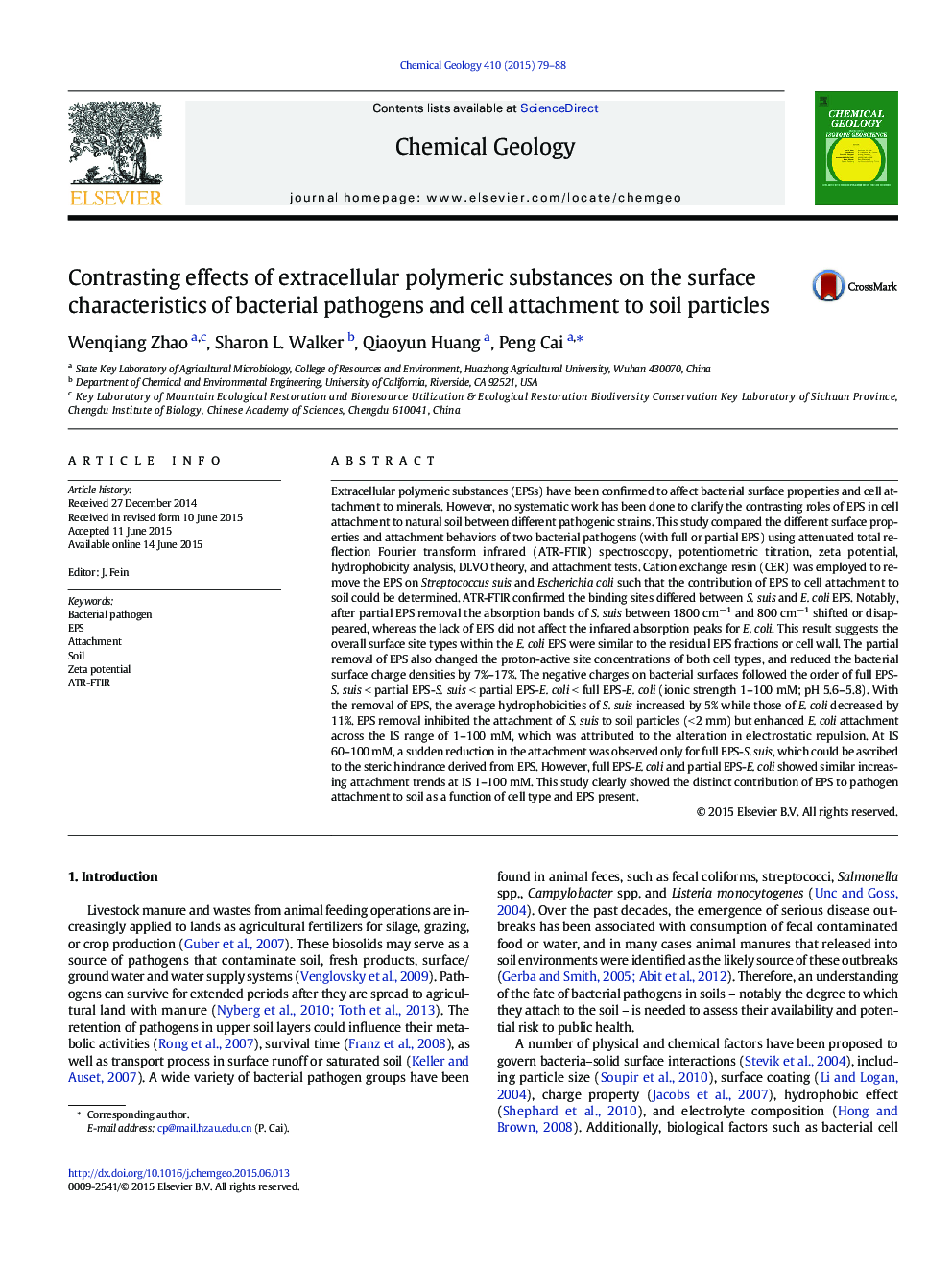| کد مقاله | کد نشریه | سال انتشار | مقاله انگلیسی | نسخه تمام متن |
|---|---|---|---|---|
| 4698486 | 1637564 | 2015 | 10 صفحه PDF | دانلود رایگان |
• The FTIR absorption bands of partial EPS-S. suis shifted or disappeared.
• CER treatment changed the cell surface charge densities and site concentrations.
• EPS had contrasting influences on the cell surface charges and hydrophobicities.
• EPS removal inhibited S. suis attachment to soil but enhanced E. coli attachment.
• Steric hindrance from EPS was possibly involved in full EPS-S. suis attachment.
Extracellular polymeric substances (EPSs) have been confirmed to affect bacterial surface properties and cell attachment to minerals. However, no systematic work has been done to clarify the contrasting roles of EPS in cell attachment to natural soil between different pathogenic strains. This study compared the different surface properties and attachment behaviors of two bacterial pathogens (with full or partial EPS) using attenuated total reflection Fourier transform infrared (ATR-FTIR) spectroscopy, potentiometric titration, zeta potential, hydrophobicity analysis, DLVO theory, and attachment tests. Cation exchange resin (CER) was employed to remove the EPS on Streptococcus suis and Escherichia coli such that the contribution of EPS to cell attachment to soil could be determined. ATR-FTIR confirmed the binding sites differed between S. suis and E. coli EPS. Notably, after partial EPS removal the absorption bands of S. suis between 1800 cm−1 and 800 cm−1 shifted or disappeared, whereas the lack of EPS did not affect the infrared absorption peaks for E. coli. This result suggests the overall surface site types within the E. coli EPS were similar to the residual EPS fractions or cell wall. The partial removal of EPS also changed the proton-active site concentrations of both cell types, and reduced the bacterial surface charge densities by 7%–17%. The negative charges on bacterial surfaces followed the order of full EPS-S. suis < partial EPS-S. suis < partial EPS-E. coli < full EPS-E. coli (ionic strength 1–100 mM; pH 5.6–5.8). With the removal of EPS, the average hydrophobicities of S. suis increased by 5% while those of E. coli decreased by 11%. EPS removal inhibited the attachment of S. suis to soil particles (< 2 mm) but enhanced E. coli attachment across the IS range of 1–100 mM, which was attributed to the alteration in electrostatic repulsion. At IS 60–100 mM, a sudden reduction in the attachment was observed only for full EPS-S. suis, which could be ascribed to the steric hindrance derived from EPS. However, full EPS-E. coli and partial EPS-E. coli showed similar increasing attachment trends at IS 1–100 mM. This study clearly showed the distinct contribution of EPS to pathogen attachment to soil as a function of cell type and EPS present.
Figure optionsDownload as PowerPoint slide
Journal: Chemical Geology - Volume 410, 2 September 2015, Pages 79–88
